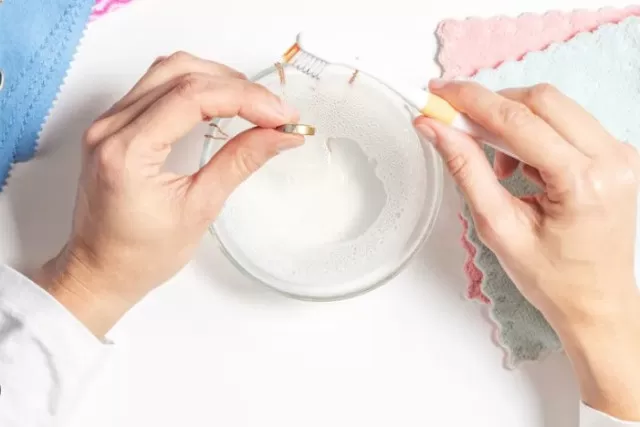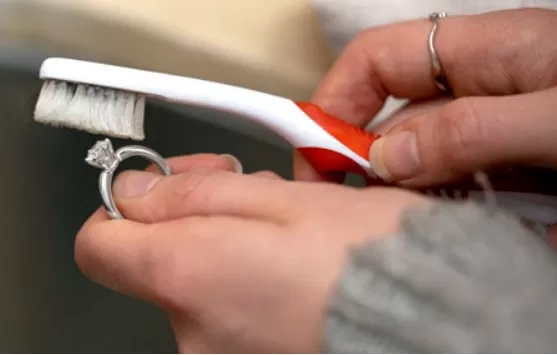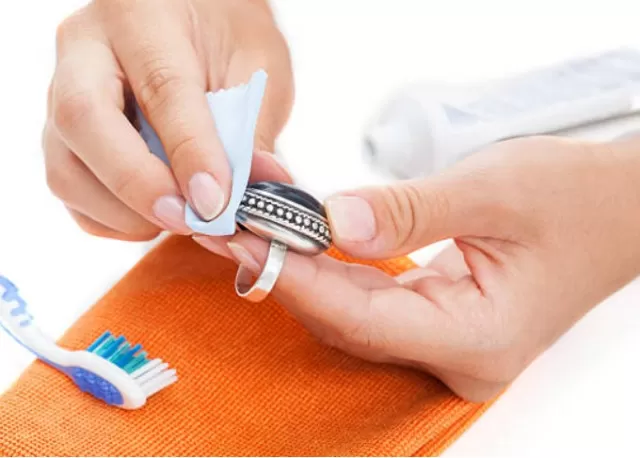How to Properly Clean and Care for a Tungsten Ring. Tungsten rings have become popular due to their durability, stylish appearance, and affordability.
Tungsten carbide is also used by jewelers to create bracelets, necklaces, and earrings that are much more affordable than silver, gold, or platinum. Tungsten is rust-resistant, won’t tarnish, and is easy to clean.
Tungsten carbide jewelry is made up of 80% elemental tungsten and 20% carbon alloyed with other metals. The process begins with fine gray powder that is heated, pressed, and formed into shapes for jewelry, industrial machinery, and plates for armored vests.
To keep your tungsten ring and other jewelry clean, learn how to use a few products that you already have on hand.
How Often Should You Clean a Tungsten Ring?

The frequency of cleaning a tungsten ring depends on the activities you engage in while wearing the ring.
It’s essential to clean the ring as soon as possible after exposure to harsh chemicals such as ammonia, chlorine, or motor oils. Even everyday activities such as contact with body oils, bathing, and cleaning products can leave the ring looking dull.
If you notice a loss of luster, it’s time to give the ring a thorough cleaning. This can be done monthly or as needed.
How to Mix a Cleaning Solution for a Tungsten Ring

To mix a cleaning solution for a tungsten ring, follow these steps
Add one cup of warm water to a small bowl.
Add about three drops of a mild dishwashing liquid to the bowl.
Make sure the dishwashing liquid is free of ammonia or chlorine bleach.
Mix the solution until it is well-combined.
Note: Avoid using any cleaning products that contain ammonia or chlorine bleach, as these can damage the surface of the tungsten ring.
How to Remove and Inspect a Tungsten Ring

To remove and inspect a tungsten ring, follow these steps
Gently twist the ring back and forth while pulling it off your finger.
Inspect the ring for any loose stones or other issues, such as scratches, cracks, or discoloration.
If you notice any problems with your ring, do not continue to clean it.
Take it to a jeweler for repair.
If the ring is in good condition, proceed with cleaning it using the solution you have mixed.
How to Add the Tungsten Ring to the Cleaning Solution
To add a tungsten ring to the cleaning solution, follow these steps
Place the ring in the cleaning solution.
Allow the ring to soak for at least 10 minutes.
If the ring has engraving or mounted stones, let it soak a bit longer to help loosen the soil that has accumulated in those areas.
Note: Do not use a toothbrush or any other abrasive tool to scrub the ring, as this can scratch the surface of the tungsten.
How to Remove the Tungsten Ring from the Cleaning Solution
To remove the tungsten ring from the cleaning solution, follow these steps
Take the ring out of the cleaning solution.
Use a soft-bristled toothbrush to gently scrub away any visible soil.
Pay close attention to engraved areas or the nooks and crannies around mounted stones.
If some of the grime will not come off, return the ring to the soaking solution for another 10-15 minutes and try again.
Note: Be gentle while scrubbing the ring and avoid using any abrasive tools or cleaners, as they can damage the tungsten surface.
How to Rinse and Buff Dry a Tungsten Ring After Cleaning
Rinse the ring under warm running water to remove any remaining cleaning solution.
Use a clean, soft cloth to buff the ring dry.
If desired, you can use a jewelry polishing cloth to give the ring an extra shine.
Note: Do not use paper towels or tissues to dry the ring, as they can scratch the surface.
Also, avoid using any harsh chemicals or abrasive materials during the drying process.
*The information is for reference only.